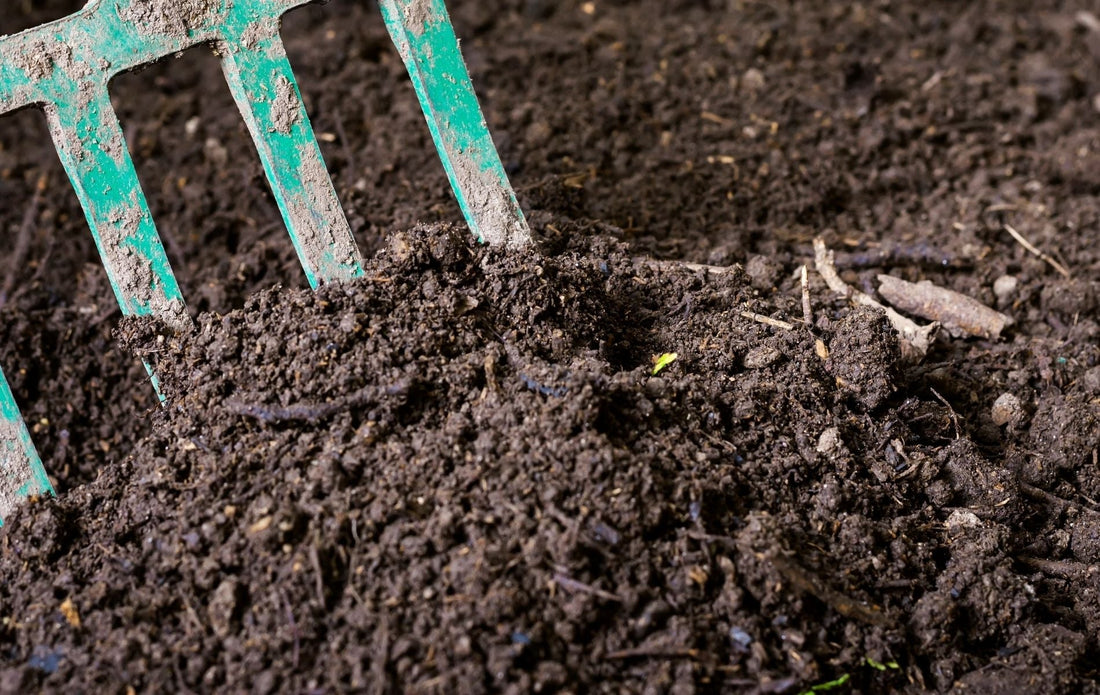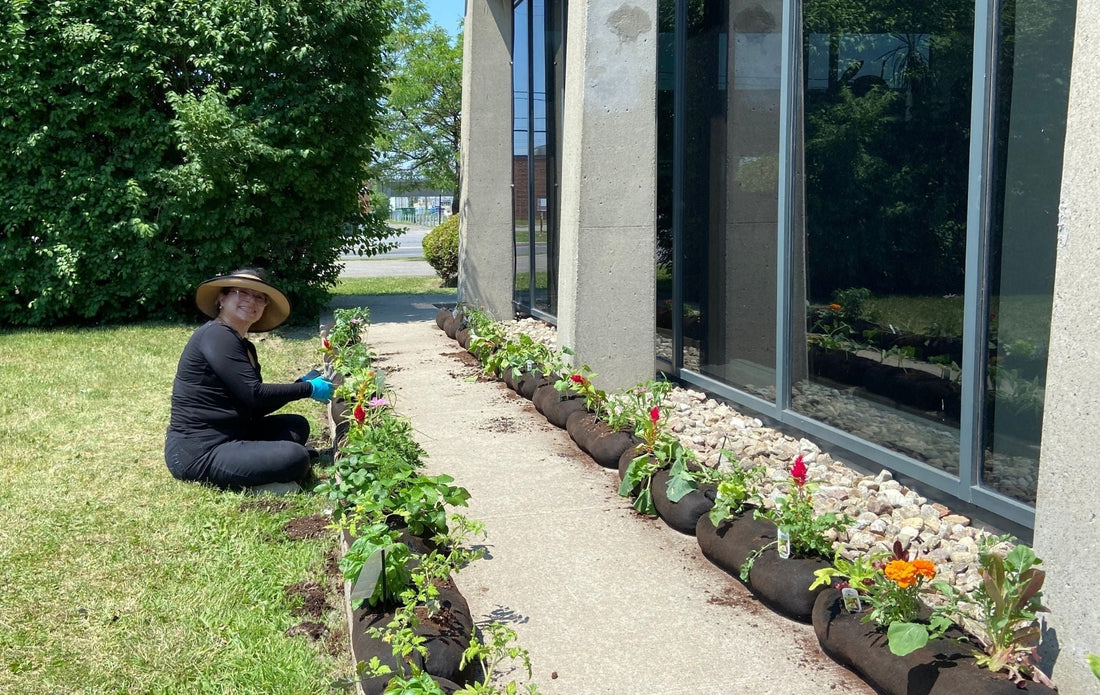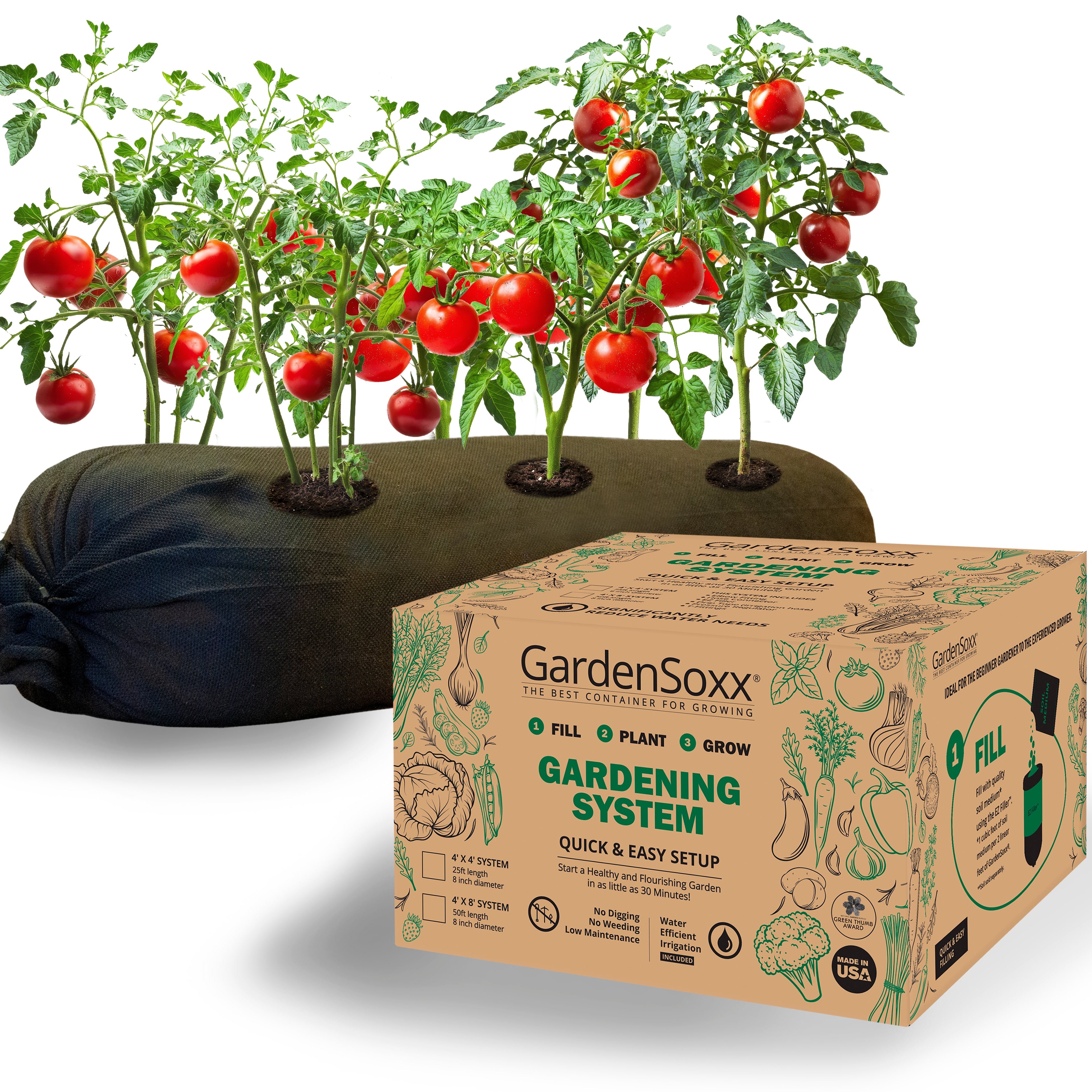Offering a variety of benefits to small-space gardens, urban farms and even larger growing operations, “Companion Planting” is a technique well worth exploring. The benefits of companion planting in containers are not limited to simply maximizing the amount of produce that can be grown in a small space, but also extend to soil and plant health, yield and even natural pest control. It is a simple technique that can be easily mastered by the beginner gardener, helping you to make the most out of your garden.

The companion planting technique is nothing new. In fact, there is evidence of this technique being used as far back as Ancient China - where growers followed old traditions of including garlic bulbs among their other vegetable crops to help deter potential pests. Perhaps one of the best known examples of companion planting is the “Three Sisters” garden, a technique used by Indigenous tribes throughout North America that combines specific crops known to support and benefit each other to maximize space, efficiency and yield.

The Basics of Companion Planting in Containers
Different plants have different needs, and so understanding the way each plant grows, how much space and drainage each one requires are important considerations when choosing the right container. There are also different ways that plants support one another - some may help deter pests, while others can help enhance the growth of their neighboring plants.
Smaller containers, window boxes and round plant pots can be used to companion plant smaller herbs and flowers, while fabric planters like GardenSoxx® can offer more companion planting flexibility and potential for a wider variety of plants. While raised beds offer a larger area, they are still contained and the right companion plant pairings can help to truly maximize their potential.

When companion planting in containers, you will want to consider the main goal of your companion planting technique which will help you decide which plants should be paired together.
If your goal is to do your own pest control without the use of chemicals, you will want to think about the Trap Cropping method. This means planting specific crops that will lure pests in, thereby distracting and deterring them away from your main crops. Alternatively, you can also companion plant your crops with strong-scented herbs that help to deter pests altogether. Consider including plants that attract pollinators and other beneficial insects that will help to control pest populations and create a balanced garden ecosystem.
If plant health and protection is your main concern, you will want to choose crops that can support and nurture one another - either by giving each other shade, physical support, or enhancing specific nutrients in the soil that other crops can benefit from. Try combining plants that grow up along a trellis with crops that create deeper root systems and prefer to be in the shade. Certain plants have the capability of producing and fixing nitrogen in the soil - and they are best planted with crops that require higher levels of nitrogen to thrive.

If you are ultimately trying to save space, you will want to focus mainly on plants that grow well together and will not compete for nutrients or resources. You can also use companion planting as an opportunity to combine edibles and ornamentals to maximize functionality without compromising the beauty of your space. With companion planting, you can get creative with your landscape without the need to have a dedicated space for a separate vegetable garden.
Best Companion Plant Pairings for Gardening Containers
A common strategy when planting for pest control is to include aromatic herbs among your vegetable crops. Herbs like Rosemary, Lavender, Chives and Lemongrass have strong scents that deter a variety of garden pests, keeping them away from your vegetables. Mint is another common pest deterrent, but due to its invasive nature, keeping it contained to its own pot is strongly recommended. The strong scent of garlic and onions, combined with the small space they take up, make them excellent companion plants to put in between other vegetable crops.
If you are trying out the Trap Crop method for pest control, Nasturtium companion plants are a top contender. This pretty (and edible) flowering plant can bring a pop of color to your garden, while drawing pests away from your more valuable vegetable crops. Sunflowers, Calendula and Marigold companion plants are also effective at attracting the insects that you do not want feeding on your edible crops. Plus, they draw in beneficial bugs and pollinators that can help boost garden biodiversity.

Pairing plants together strategically to enhance plant health and yield is another popular companion planting strategy. As seen in the “Three Sisters” method, each plant plays a role that helps to support the other. The corn stalks provide a trellis for the beans, keeping them up and away from the squash. The beans fix nitrogen in the soil to help nourish the root systems of all plants, while the squash provides shade over the ground to hold moisture in the soil and also repels insects due to its prickly vines.
The nitrogen-fixing quality of beans and other legumes can be used to benefit a variety of other crops. Planting these alongside nitrogen-loving plants like Brassicas (broccoli, cauliflower and cabbage), Nightshade (Tomatoes, eggplant and peppers) or near cucumbers will offer a beneficial boost during the developmental stages of these vegetable crops.
The shade provided by climbing or creeping crops (like squash, pole beans, melon and okra) can be beneficial for plants that are more susceptible to heat stress. Leafy greens like lettuce and spinach, herbs like cilantro and parsley, or root vegetables like radish and carrots will benefit from being planted next to crops that can provide shade for them as they grow.
Other companion plant pairings with known benefits:
- Basil & Tomato: Companion planting tomatoes with basil is a winning combination. These plants not only work well when combined together in a recipe, but when grown next to each other, they can actually improve their flavor and enhance their growth. Basil helps to deter pests from tomatoes, and also helps to suppress weeds.
- Carrots & Onion: Because they have complementary growth habits (with onions growing upward and carrots burrowing down into the soil), these crops make a perfect pair. Onions can repel potential pests like carrot flies, and carrots help to aerate the soil which benefits the onion crop.

-
Marigold & Peppers: Marigolds make excellent companion plants for peppers in containers. As a crop that is often susceptible to nematode damage, peppers will benefit from being planted next to nematode-repelling marigolds. The pollinators that the marigold attracts will also help to improve yield and fruiting on the peppers.
- Cabbage & Dill: A known deterrent for pests, dill is excellent at keeping cabbage free of the dreaded cabbage worm, which can cause much damage to a crop. The large sprawling cabbage leaves offer shade for the dill plant, which can easily go to seed in high heat. There is also anecdotal evidence that dill can improve the growth and flavor of cabbage.
Common Mistakes to Avoid when Companion Planting in Containers
While companion planting in containers can be a fun way to experiment and try different combinations and plant pairings, there are a few things to be mindful of before jumping in. The most common mistake that is made is overcrowding the containers with too many plants. While the combination of plants may be known to be beneficial, the ideal space required for each separate plant variety should still be adhered to. Always ensure the container you are using is large enough to accommodate the plants you place in it.
Although we discussed how certain crops can provide shade for others, do keep in mind that even crops that enjoy shade still require some sun in order to grow. Make sure the plants are positioned in a way that allows sun to reach the shaded plant at various times throughout the day. The last thing you want is for the plants to be competing for resources - so also make sure that companion-planted containers are getting enough water and nutrients for all plants to thrive.

Recognize the fact that certain plants simply do not pair well together, and avoid combining them in the same container. Plants that require high levels of the same type of nutrients, or are susceptible to the same types of disease, should not be paired as companion plants. Oftentimes (but not always), crops in the same plant family should be kept separately, as they will compete for resources and risk being damaged by the same pests or plant disease.
Plants like Mint, Lemon Balm, Oregano, Jerusalem Artichoke and Raspberry are not the best contenders for companion planting in containers as they can grow to be quite invasive. Plant them in a dedicated container to allow them the space to grow and thrive on their own.
When using a companion planting method in containers, an important technique to consider is crop rotation each year. Using the same containers year after year for the same crops can lead to depleted soil and potential risks for pest and plant disease. Switching up your crops into different containers year after year will help the soil to replenish lost nutrients and allow plants the best possible chance to survive.

Companion planting in containers can be a highly effective way to grow higher yields and healthier plants in areas where space needs to be used wisely. Not only can well-paired plants offer mutual benefits to one another, they can also create a welcoming atmosphere that is visually pleasant and full of helpful biodiversity. Especially in urban settings, companion planting can be a very positive step toward sustainable gardening that helps to maximize output while minimizing any potentially harmful inputs - allowing nature to do the work.









